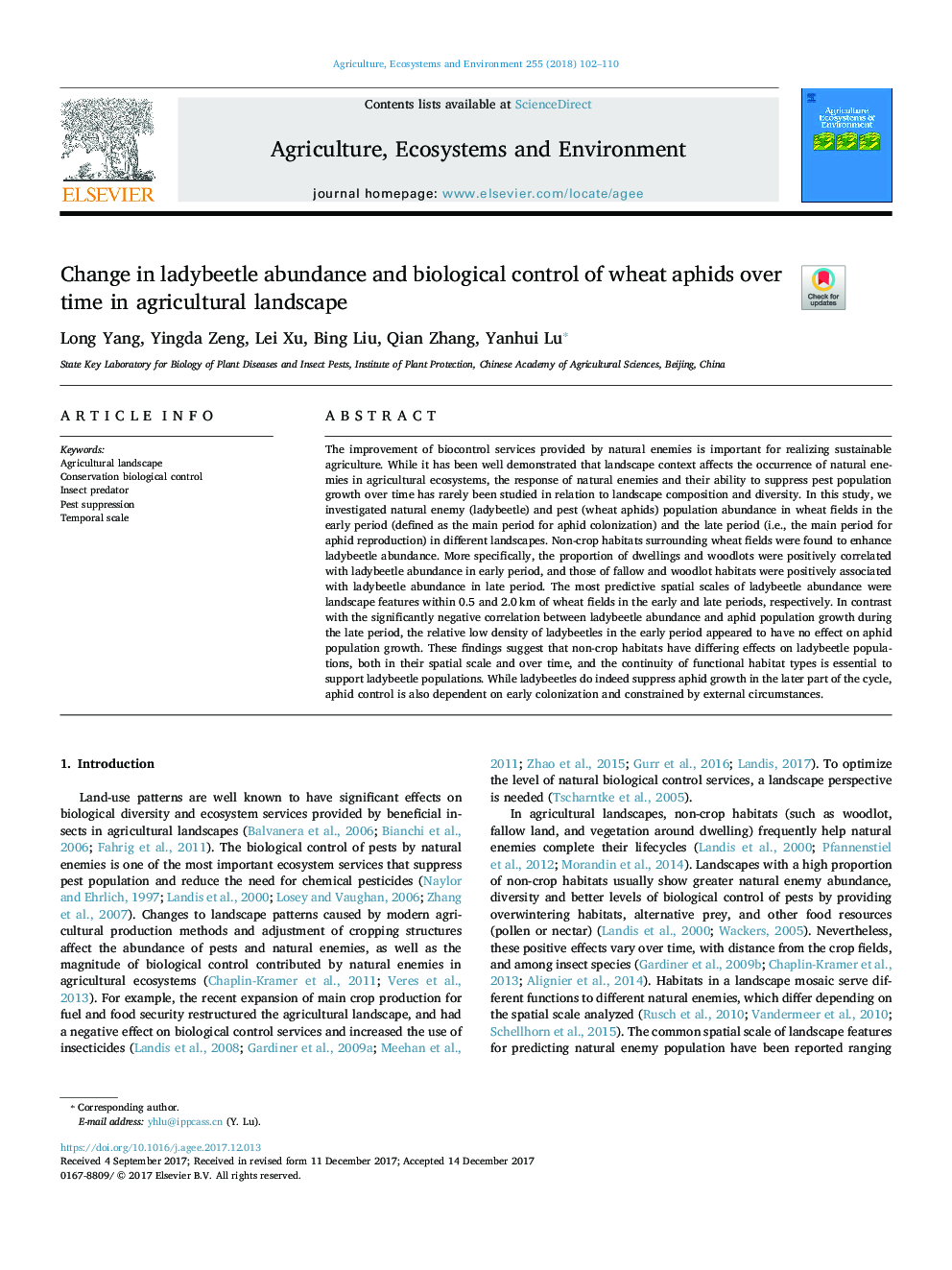| کد مقاله | کد نشریه | سال انتشار | مقاله انگلیسی | نسخه تمام متن |
|---|---|---|---|---|
| 8487191 | 1551997 | 2018 | 9 صفحه PDF | دانلود رایگان |
عنوان انگلیسی مقاله ISI
Change in ladybeetle abundance and biological control of wheat aphids over time in agricultural landscape
ترجمه فارسی عنوان
تغییر در فراوانی لوبوئید و کنترل بیولوژیکی علف گندم در طول زمان در چشم انداز کشاورزی
دانلود مقاله + سفارش ترجمه
دانلود مقاله ISI انگلیسی
رایگان برای ایرانیان
کلمات کلیدی
چشم انداز کشاورزی، حفاظت از کنترل زیستی، شکارچی حشرات، سرکوب کردن آفات، مقیاس زمانی،
موضوعات مرتبط
علوم زیستی و بیوفناوری
علوم کشاورزی و بیولوژیک
علوم زراعت و اصلاح نباتات
چکیده انگلیسی
The improvement of biocontrol services provided by natural enemies is important for realizing sustainable agriculture. While it has been well demonstrated that landscape context affects the occurrence of natural enemies in agricultural ecosystems, the response of natural enemies and their ability to suppress pest population growth over time has rarely been studied in relation to landscape composition and diversity. In this study, we investigated natural enemy (ladybeetle) and pest (wheat aphids) population abundance in wheat fields in the early period (defined as the main period for aphid colonization) and the late period (i.e., the main period for aphid reproduction) in different landscapes. Non-crop habitats surrounding wheat fields were found to enhance ladybeetle abundance. More specifically, the proportion of dwellings and woodlots were positively correlated with ladybeetle abundance in early period, and those of fallow and woodlot habitats were positively associated with ladybeetle abundance in late period. The most predictive spatial scales of ladybeetle abundance were landscape features within 0.5 and 2.0â¯km of wheat fields in the early and late periods, respectively. In contrast with the significantly negative correlation between ladybeetle abundance and aphid population growth during the late period, the relative low density of ladybeetles in the early period appeared to have no effect on aphid population growth. These findings suggest that non-crop habitats have differing effects on ladybeetle populations, both in their spatial scale and over time, and the continuity of functional habitat types is essential to support ladybeetle populations. While ladybeetles do indeed suppress aphid growth in the later part of the cycle, aphid control is also dependent on early colonization and constrained by external circumstances.
ناشر
Database: Elsevier - ScienceDirect (ساینس دایرکت)
Journal: Agriculture, Ecosystems & Environment - Volume 255, 1 March 2018, Pages 102-110
Journal: Agriculture, Ecosystems & Environment - Volume 255, 1 March 2018, Pages 102-110
نویسندگان
Long Yang, Yingda Zeng, Lei Xu, Bing Liu, Qian Zhang, Yanhui Lu,
